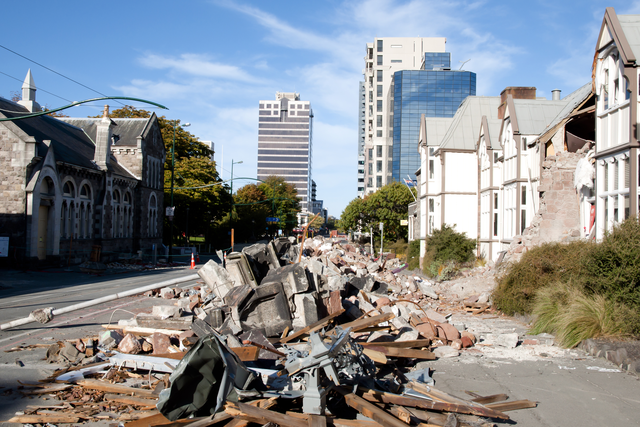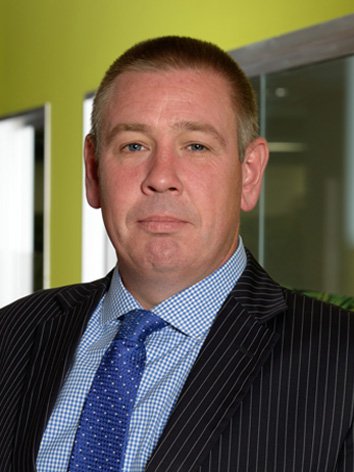Hit enter to search or ESC to close
9 September 2019
Disaster recovery: planning for the unplannable
Establishing a Disaster Recovery Plan before it’s required is crucial to retaining business continuity immediately after an earthquake and recovering faster in the months that follow.
Crombie Lockwood’s Head of Insurer Relationships and Broker Claims, Myles Noble, is a firm believer in the worst-case scenario.
In the wake of the 2010-11 Canterbury earthquakes, Crombie Lockwood helped clients manage thousands of claims and $2 billion in settlements. Crucially though, the worst-case scenario isn’t always represented by the loss of revenue.
“There are so many facets to ensuring a business can get back on its feet following an event of the magnitude of the Canterbury and Kaikoura earthquakes,” says Myles.
“Some of the biggest issues facing companies after the February 2011 earthquake were access to offices and equipment. In some instances, staff were locked out of damaged buildings for 12 months or more; they simply had to abandon the resources they had before the quake and start again.”
In order to prepare as soundly as possible for the unknown, Myles says businesses of all sizes should establish a Disaster Recovery Plan (DRP). The DRP should encompass a variety of measures to ensure the wellbeing of both the company’s employees and the ability to continue to function in the wake of a natural disaster.

Many businesses had to abandon resources they had before the 2011 quake and start again.
Disaster Recovery Plans essential for business and suppliers
An entity’s DRP should begin with something as straightforward as a ‘telephone tree’ for staff members (landlines as well as mobile numbers, as the mobile network might be overloaded), as well as contact details for key clients and suppliers.
Myles encourages business owners to ensure their suppliers and clients have their own DRP too.
“It’s all well-and-good having insurance cover. But if your suppliers are out of action for an extended period, it might mean the difference between having a product to sell, or not.”
With modern business now so reliant on electronic data, making sure such data is securely stored and easily retrievable remotely is also important. Cloud storage has become an effective failsafe for vital business information, meaning that if the worst were to happen, staff can access important information from their mobile device rather than a desktop PC located in an inaccessible building.
Knowing the shape and scale of the company’s insurance coverage (and understanding how policy coverage terms and conditions may have evolved in the wake of recent events) is crucial. Taking organic growth gaps into account when establishing insurance cover is also important; Myles believes insuring where the business is projected to be in 12 months – as opposed to where it is at the start of the insurance period – is a vital future-proofing aspect.
Offering distinct thought leadership around this weighty topic, Myles says that he and Crombie Lockwood as a business can speak to other businesses from their own experiences.
'From zero to 6,500 earthquake-related claims overnight'
In the wake of the 2010 and 2011 Canterbury earthquakes, Myles says that business continuity was just as essential for the Crombie Lockwood teams directly affected as it was for their clients.
“I’m incredibly proud of how our people managed in the weeks and months after those events, especially the devastating February 2011 quake. We really looked after our people and we were able to put into effect and hone our DRP. Because we had a plan, we were able to assemble our own emergency response team within half an hour of the February quake occurring,” he says.
“Following the 2010 event, we had 30 staff solely working on earthquake claims; we went from zero earthquake-related claims to 6,500 claims overnight. And of course, our people had their own situations to deal with. It’s a story you hear a lot from Christchurch businesses, but it was amazing to see the resilience of our people first-hand.
“Our Christchurch office has had to move four times in the last eight years as a result of the rebuild. After the Kaikoura earthquake, our Wellington team spent four months out of their building.
I mean it when I say we know how these events have lasting effects on businesses.
“And we’re still supporting clients as a direct result of the earthquakes today; if you aren’t prepared as a business, picking up the pieces can become a protracted affair.”
“My best advice would be to choose your insurance broker based on value, not on price. Costs aside, does your broker understand your company and the risks that could pose a threat to your business continuity?”
Regularly reviewing sums insured, instigating biennial building valuations, considering loss of rental income cover and looking for cover that is tailored to specific industries – as opposed to generic policies with ill-fitting terms – are further learnings Myles has identified.
“Post-quakes, I believe there are more people taking the time to ensure the insurance coverage they have is more extensive, which is a really positive outcome,” he concludes.
“There are still many people shopping on cost though, which could prove extremely risky in the worst-case scenario.
We don’t know what shape the next large-scale natural disaster to hit New Zealand will take. But I do believe business owners have the ability to prepare for such an event as much as they can; in a country like ours it should be a mandatory part of doing business, regardless of the scale of the entity.”

Myles Noble, Head of Insurer Relationships and Broker Claims.